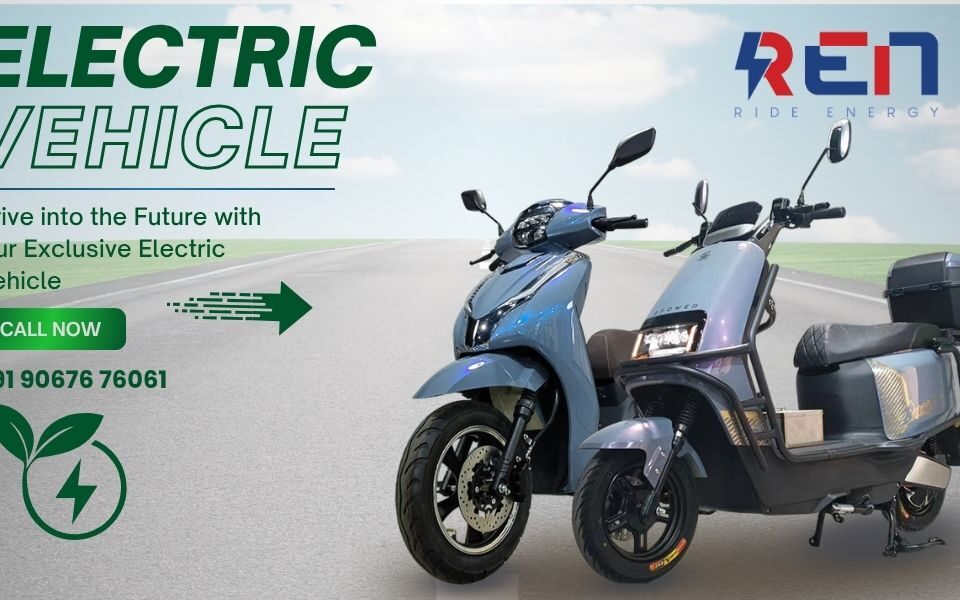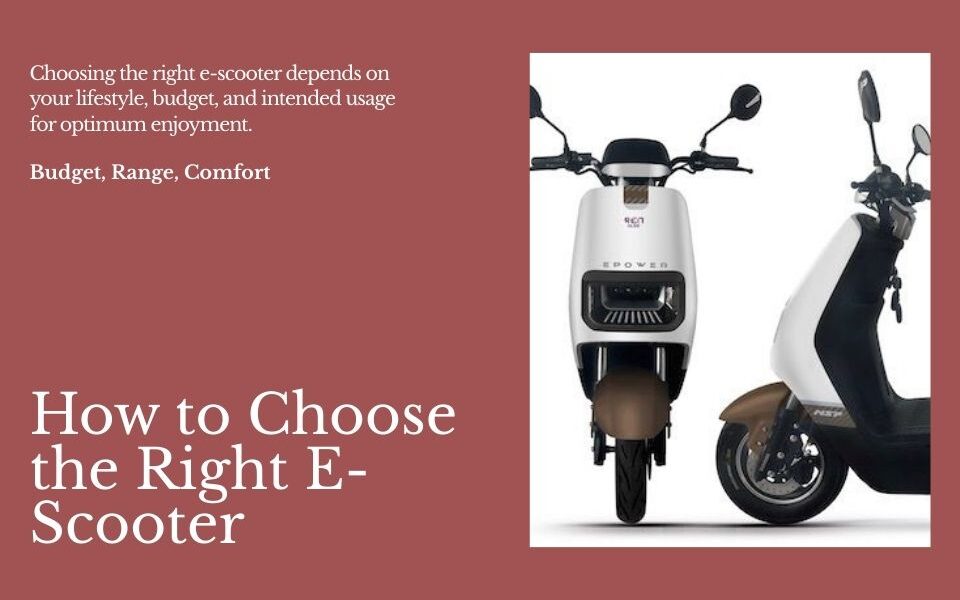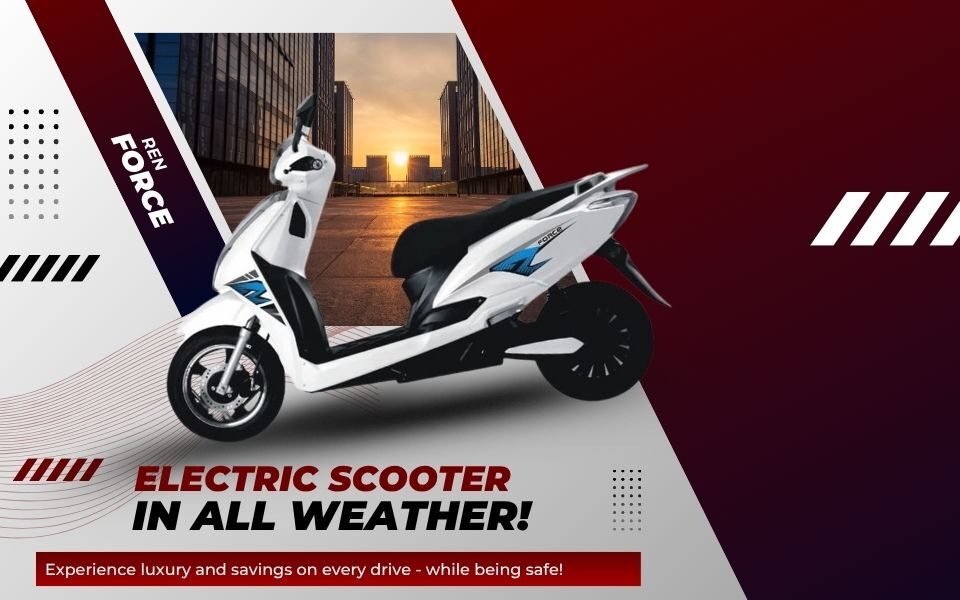
Can You Use an Electric Scooter in All Weather? Here’s the Truth
June 21, 2025
How to Choose the Right E-Scooter for Your Lifestyle
July 12, 2025Introduction
Electric scooters have zoomed their way into urban mobility solutions as efficient, eco-friendly, and fun alternatives to traditional transportation. But beyond their sleek design and futuristic appeal lies a powerful financial benefit that often goes unnoticed: hidden cost savings. From reduced maintenance and fuel costs to tax benefits and time efficiency, owning an e-scooter could be one of the smartest financial moves you make.
In this blog, we break down the many layers of hidden savings that e-scooters offer. Whether you’re a student, office commuter, delivery partner, or city dweller trying to cut daily expenses, you’ll soon discover that these two-wheeled machines save far more than just carbon emissions.
1. Say Goodbye to Fuel Costs
One of the most obvious (yet still underrated) savings is on fuel. With petrol prices fluctuating and diesel remaining expensive, traditional two-wheelers and cars burn a hole in your monthly budget.
- Average fuel cost per month for a commuter bike: INR 1,200–2,500
- E-scooter monthly charging cost: INR 100–300 depending on usage and power tariff
Annual Savings: INR 12,000–25,000+
The difference is stark, especially over years. And with fuel prices only expected to rise, the savings from switching to electricity grow with time.
2. Minimal Maintenance Requirement
Electric scooters have fewer moving parts than petrol-powered vehicles. No engine oil, spark plugs, clutch cables, or air filters to worry about.
Typical maintenance savings include:
- No oil changes every 3 months
- Fewer brake replacements due to regenerative braking
- No carburetor cleaning or emission control system services
Estimated Yearly Savings: INR 3,000–6,000
Additionally, e-scooters are often built for plug-and-play serviceability. Basic checks like tire inflation and brake pad changes are less frequent and more affordable.
3. Government Subsidies & Tax Incentives
To promote green mobility, several governments across India offer incentives, including:
- FAME II Subsidy (Faster Adoption and Manufacturing of Hybrid and Electric Vehicles)
- Road tax waivers
- Lower registration fees
- State-specific cashback or discount schemes
Example: Buyers can save anywhere from INR 10,000 to INR 50,000 depending on model and region.
For example, in Delhi or Maharashtra, subsidies and lower road tax make a mid-range e-scooter up to 20% cheaper than its petrol counterpart.
4. Reduced Insurance Premiums
Electric scooters typically cost less to insure than petrol-powered two-wheelers. Why?
- Fewer parts to damage = Lower risk for insurers
- Often limited to lower speeds = Fewer accidents
Annual Savings on Insurance: INR 500–1,500
Multiply that over a 5-year ownership and you’re saving INR 2,500–7,500 just on insurance premiums.
5. Savings on Daily Parking Fees
In many Indian cities, parking fees can range from INR 10–100 per day, especially in commercial zones or malls.
Many e-scooters qualify for:
- Free or discounted EV-specific parking
- Compact size = More flexibility to park in smaller, cost-free spaces
Monthly Savings: INR 300–1,000 Annual Savings: INR 3,600–12,000
6. Longevity & ROI on Battery Investment
A major concern among buyers is the cost of battery replacement. While it’s true that batteries degrade over time, most lithium-ion packs are built to last 3–5 years or 500–1000 charging cycles.
Here’s the math:
- Battery replacement cost: INR 15,000–30,000
- Spread over 5 years: INR 3,000–6,000 per year
- When compared with fuel and maintenance savings, the ROI still remains strong
In many cases, you recover battery replacement costs just from fuel savings alone.
7. Time is Money – And E-Scooters Save You Plenty
While not directly financial, time savings translate to improved productivity and lifestyle quality:
- Zip through traffic and narrow lanes
- Faster parking
- No waiting in petrol pump queues
Assuming 20 minutes saved daily = 10 hours/month If your time is worth INR 200/hour, that’s INR 2,000/month in productivity — or INR 24,000/year.
That’s not even counting the reduced mental fatigue of dealing with traffic or long commutes.
8. Reduced Wear on Footwear & Clothing
Oddly enough, riders switching from walking or cycling to e-scooters notice longer life for shoes and daily wear outfits. Less sweating, less road grime, and fewer tears or scuffs.
Estimated Minor Savings: INR 1,000–2,000/year
Not a huge figure, but an interesting side perk you probably hadn’t thought about!
9. Environmentally Responsible = Social Rewards
While not always monetary, making eco-conscious choices brings intangible savings:
- Social goodwill and brand value if you run a business
- Access to green initiatives or loyalty programs
- Lower personal carbon footprint = long-term environmental cost reduction
Think of this as investing in cleaner air and a healthier tomorrow — a different kind of return on investment.
10. Resale Value & Upgrade Incentives
As the EV market matures, resale value for well-maintained e-scooters is steadily improving. Buyers are more willing to invest in pre-owned e-scooters, especially if the battery health is good.
In addition:
- Many brands offer exchange bonuses for upgrades
- Battery buyback or recycling programs give cashback
Estimated Buyback Bonus or Exchange Saving: INR 5,000–10,000
Conclusion: The Smart Economics of E-Scooters
When you add it all up — fuel, maintenance, parking, insurance, time, government incentives, and more — the financial logic of owning an electric scooter becomes undeniable.
While the upfront cost may feel like an investment, the ongoing savings far outweigh the initial spend. For cost-conscious individuals, families, students, and urban professionals, e-scooters present an unbeatable mix of affordability, sustainability, and smart commuting.
So the next time someone asks, “Why go electric?” — you’ll have not just one, but ten powerful reasons that speak both to the wallet and the world.
Ready to Ride Smarter? Share this post with someone who’s still debating their next purchase. Or better yet, crunch the numbers and make your move toward cost-effective, green mobility today!




